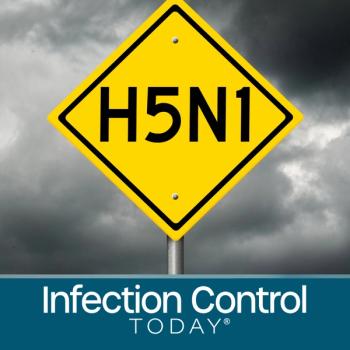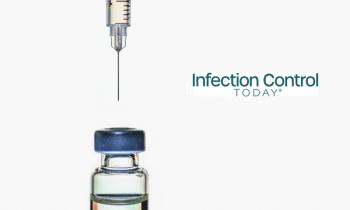Editorial
As of May 11, 2023, President Joe Biden has removed the COVID-19 Public Health Emergency (PHE). The public is being encouraged to “live with the virus” and return to a more normal life. Although the United States’ COVID-19 response has been severely criticized, one success has been in the rapid development and deployment of vaccines. Current data from the CDC clearly demonstrates that those who are up to date on vaccinations “are much less likely to experience severe symptoms.” According to the Commonwealth Fund in the first 2 years of the United States’s vaccination program, vaccination prevented 18.5 million hospitalizations, 3.2 million deaths and saved 1.15 trillion dollars in medical costs.
As of last November, 94% of the population in the United States has been exposed to SARS-CoV-2. There is evidence that vaccination may cut the chance of developing long COVID, and the chances of developing long COVID from a second infection has been reported to be cut in half. Thus, normality appears to be on the horizon. However, many view a decrease in long COVID from 4% to 2.5% is not adequate and a one chance in 40 of developing protracted symptoms exemplifies that SARS-CoV-2 is still a dangerous virus.
The PHE allowed for widespread mandates and lockdowns to take place. These interventions were important early in the pandemic when little was known about the virus and our health care system was becoming overwhelmed, with many facilities resorting to mobile morgues. However, as treatment and vaccination strategies became both effective and adopted by the majority of the public, mandates and lockdowns were viewed as less critical, and used by some as a political lightning rod to divide our society.
With the ending of the PHE, most enacted federal mandates were lifted. This included vaccine mandates for health care workers, federal workers and contractors, international travelers, and Head Start educators. Voluntary restrictions by private institutions, such as continued masking requirements, can still exist in some public venues. One can make a strong case for continued mandatory masking in health care settings to protect highly vulnerable patients from airborne pathogens. This should be the policy regardless of COVID-19.
Even with the ending of the PHE, SARS-CoV-2 is still here and apparently did not read the memo. Despite having an underutilized reporting system largely due to home testing, as of May 1, 2023, there were four states with weekly case rates of between 50 to 100 cases per 100,000 and there are many areas of the county at medium and high transmission levels. The CDC does not have current data from the State of Iowa. There are also concerns that transmission rates will increase, if the XBB.1.16 variant continues to undergo rapid growth in the United States, it comprises 11.7% of isolates as of May 1, 2023. This variant currently comprises 38% of infections in India and has just been labeled a variant of interest by the WHO. XBB.1.16 has also prompted recommendations for a return to testing and the wearing of face masks by professor Stephen Griffin, Chair of the United Kingdom’s Scientific Advisory Group for Emergencies (SAGE).
Thus, even though the PHE has ended, we still need to follow public health advice regarding testing, masking, and maintaining up-to-date vaccinations. In addition, if you become infected with SARS-CoV-2, you will need readily accessible antiviral medications, and if you become severely ill, hospitalization may be required. Access to all these benefits will change with the end of the PHE. However, the FDA’s emergency use authorization for vaccines and COVID antiviral treatments will continue to be in effect.
Exactly what happens is still in flux and will depend upon one’s health care coverage. For those who have private health care insurance, it is best for individuals to call their carrier and ask them about benefits regarding testing, vaccinations, and antiviral medications. For those uninsured, or have Medicaid, it is best to check with the state’s Medicaid or public health offices to determine exact benefits.
People with private insurance, Medicare or Medicaid will not have to pay for vaccines as long as they obtain them from an in-network provider. The White House has announced there will also be programs for the uninsured to obtain vaccines, but the details are not yet available.
Medicaid has the best coverage, with access to free tests, vaccines, and treatments without copays until the end of 2024. However, there will be a loss of Medicaid funds. During the PHE there was a 6.2% percentage point increase in states federal matching funds. These funds will now be phased out through Dec. 31, 2023. In addition, continuous enrollment for those who became non-eligible for Medicaid, ended on Mar. 31, 2023, prior to the ending of the PHE.
Expansion of telehealth benefits with Medicare will expire on Dec. 31, 2023. States may individually modify telehealth access in their Medicaid programs.
Medicare also provided a 20% increase in payments for those patients diagnosed with COVID-19. This is set to expire at the end of the Public Health Emergency.
Federal provision of personal protective equipment stopped with the end of the PHE, as will the distribution of monthly free at-home tests for patients with Medicare and private insurance. During the PHE, private health insurance and Medicare were required to provide reimbursement for testing (even with out-of-network providers) and the provision of at-home tests (up to 8 per month). Those who have not ordered tests since Dec. 25, 2022 from may still be able to do so as long as supply lasts.
According to the Kaiser Family Foundation, testing, and treatment for the uninsured will be discontinued at the end of the public health emergency. COVID-19 tests will be available on the private market. In Europe one company, Fluorecare, is marketing a combination of COVID-19, Influenza A & B, and RSV, for 4.5 euros ($5 US) a far cry to the approximately $12 for a single COVID-19 test in the United States.
Antiviral medications will still be available for those with private insurance, as well as those with Medicaid and Medicare but copays may be required. The US Department of Health and Human Services has stated access will “generally not be affected.” The exact details will vary between providers.
Post PHE Deficiencies Which Need Correction
A critical transformation of our public health system is desperately needed to respond to COVID-19 and future pandemics. Unfortunately, this has not taken place. The London based forecasting group Airfinity predicts a greater than one chance in 4 of a future pandemic occurring in the next decade. Instead of building a national public health system or even preserving the advances we have made, we appear to be tearing down our tracking and response capabilities. The COVID Crisis Group, a group of scientists which formed in 2021 to track the pandemic, released a report on April 25th which found that “the United States met the 21st century pandemic emergency with structures mainly built for 19th century problems.”
Far from establishing a national reporting system which includes home test results, the CDC has just announced it will no longer report its color-coded COVID-19 community levels as a way to track the spread of the infection. COVID-19 is still a reportable condition, but this reporting would be expected to be spotty, without a clear system for capturing cases treated by frontline providers. This is clearly a critical missed opportunity for engagement of electronic medical records in public health.
Federal reporting of one of the most useful metrics, test positivity rate, will also be curtailed, since laboratories are no longer required to report data to public health agencies. Fortunately, one of the major testing providers, Walgreens, still has its data available online in a user-friendly format.
The United States’ reporting system is all but collapsing, exemplified by the lack of current data from the State of Iowa. There are even calls for only reporting severe COVID-19 with pulmonary manifestations (the State of Massachusetts currently reports both COVID-19 cases and those cases with pulmonary manifestations treated with steroids).
The United States also did not effectively track health care-acquired COVID-19 cases. We used an ineffective metric which captured few of the cases. Even at the peak of infectivity with the Omicron variant approximately 3000 cases per week were reported, compared to over 600,000 weekly hospital admissions. Last week the CDC made reporting voluntary.
We are no longer experiencing large waves of COVID-19 hospitalizations and deaths. Likewise, the very low troughs for infections are also not being reached. Our reporting of infections has been severely hobbled so significant waves of infections may go unnoticed.
It has been estimated that 65% of individuals have had multiple infections and that we are destined to contract COVID-19 many more times over the ensuing decades. The WHO estimates long COVID affects one in 10 COVID-19 patients. Worldwide, hundreds of millions may need long-term treatment. Long COVID may well be the driving force impacting the “low unemployment rate in the United States. Our economy may not be overheating; instead, our workforce may be sick. Rising interest rates by the Federal Reserve Board will NOT fix the latter.
Even though the PHE has ended, numerous workplaces need to implement preventive strategies and upgrade their infrastructure. At a recent CDC Epidemic Intelligence Service Conference, participants were exposed to SARS-CoV-2, where positive individuals attended. Few socially distance and social media posts showed few wearing masks. At least 35 SARS-CoV-2 cases have been linked to the event. Adequate ventilation is still lacking in far too many venues, including our dilapidated school infrastructure. Approximately half of the United States’ school systems need to update or replace “multiple systems like heating, ventilation, and air conditioning (HVAC) or plumbing.” In Sweden, 75% of non-healthcare outbreaks were in nursery, elementary, and grammar schools. In the United States, too many do not recognize schools as a major source of viral spread. Researchers have found that there is a 9% increase in airborne pathogen detection for every 100 ppm increase in CO2. Improved ventilation is one of the keys to mitigating the spread of SARS-CoV-2.
It may be time to discontinue the Pandemic Health Emergency, but many have concerns regarding this action when the United States appears to be unprepared for another SARS-CoV-2 surge, let alone a new pandemic. As a nation, we can and must do better.







